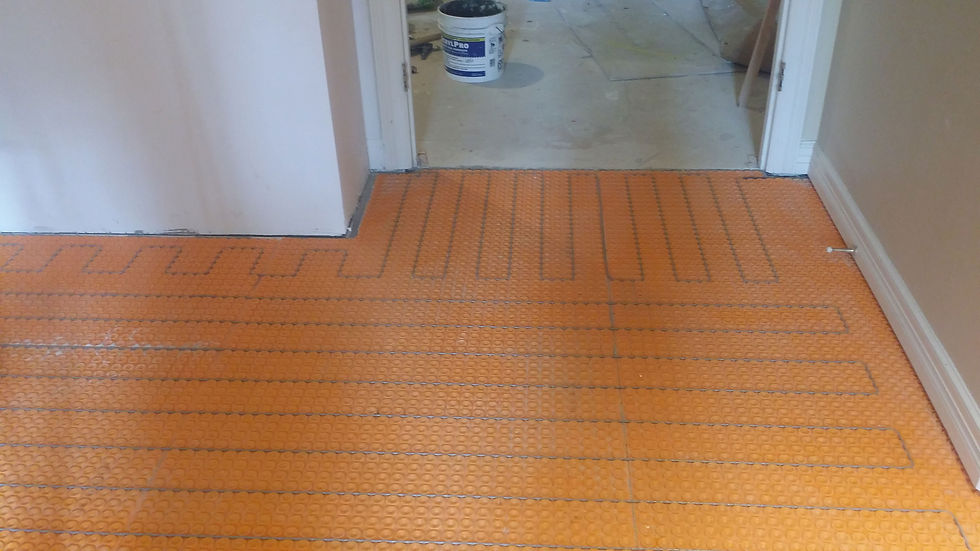Got Cold Feet?
- LS Panas and Associates
- Feb 4, 2019
- 2 min read
Cold Feet – The Warmth of Radiant Floor Heat
Do you ever wake up in the morning and get cold feet when your feet hit the floor? Wouldn’t it be nice in the middle of winter to feel warm, like when you walk outside barefoot on a summer’s day on concrete that has been heated by the sun’s rays? This is essentially how it feels to have radiant floor heat.
What is radiant floor heating?

Radiant floor heating has its origins in Korean and Roman history, when fires were lit beneath the floors for warmth. Of course, today we have much safer and more effective methods to heat our floors. Radiant floor heating, sometime referred to as “under-floor heating” is a method of heating your home in which heat is directly applied to the floor of your home. As the energy moves directly up from the floor, or other surface, heat continues to radiate outwards and heat the surrounding air.
How does radiant floor heating work?

There are two main types of radiant floor heating. These types of heating determine how the heating works and how it is installed.
Electric Radiant Floors -- This form of radiant floor heating relies on a system of cables built into the floor to disperse heat through the material of the floor. One example of an electric radiant floor would be mats of electric conduction cables placed underneath a tile floor. The mats heat the floor.
Hydronic Radiant Floors -- Hydronic radiant floors use a similar method of heating the floor from underneath, but instead use a system based on tubes of liquid. For this kind of radiant floor heating, tubing is arranged underneath the flooring and heated water is pumped through the tubing. This type of heating is by far the most energy efficient but can be costly to install.
What are the benefits of radiant floor heating?
* Provides consistent and even heat
* Less heat loss than conventional forced air systems
* Great to use in locations where conventional heating cannot be used or capacity is at its limit.
What are the drawbacks of radiant floor heating?
* Cost - In an average size bathroom you can expect to pay between $1,500 - $2,000.
* The other drawback of radiant floor heating is that unless you are building a new home and have the opportunity to start from scratch, installation is extremely difficult. If you want to cool your home, you will still need AC and an air handler. Most people elect to use radiant floor heat in tiled areas such as bathrooms.
Radiant floor heating is an excellent and efficient way to heat your home and save money and energy. If you are building a new home or doing a very invasive remodel, installing radiant floor heating is a great addition.
For a interesting read on the history of heated floors check out this article: https://underfloorheatingexpert.com/underfloor-heating-systems-history/






